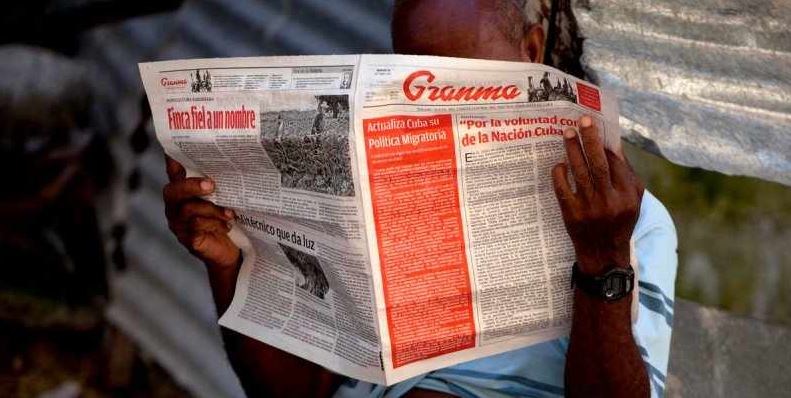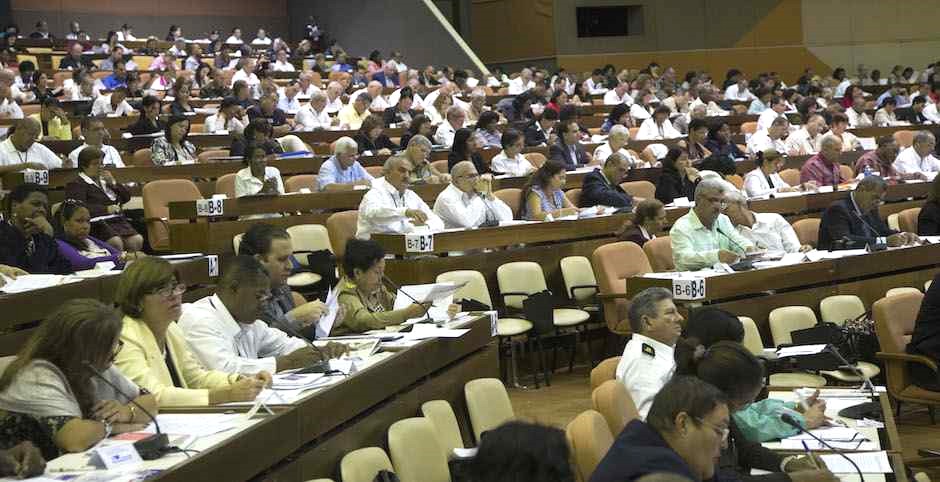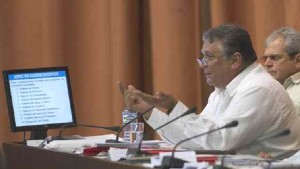
The press and the National Assembly: Questions flow through the streets
HAVANA — The final gathering for 2015 of the National Assembly of the People’s Power ended Dec. 29 in Havana. I have read and re-read the articles published in the national media, and, like most Cubans, I’ve been left with the desire to read data, analyses and discussions. I presume that they occurred.
I don’t remember the number of pages of the report by the minister of Finance and Prices published in the press, but I do know with bitter certainty that I didn’t find in it the total national budget for the coming year. I was left with the legitimate desire to know how much money we have on hand and the amounts that will be allocated per sector.
I felt as if we in our house were unaware of the family budget, where we have to maintain the regular expenses, where we need to increase them, and how tight must we tighten our belts. This lack of knowledge pushes us apart, separates us instead of bringing us together to — at the very least — inform us of the financial reality of the country of which we’re citizens.

Information is the first essential step for participation. Its absence establishes a distance between the rulers and the ruled, the institutions and the citizenry.
Distance. A key word because, if we meditate a little about the strategy of those who aim to pervert the Cuban process, this word, “distance,” is the first step to a separation and later a divorce, the three steps taken practically by every couple that breaks up.
And every society operates on the basis of a contract, so, because I support the contract of Actualization of the Cuban Project, my concern and my need to say what I think are inevitable.
At the same time, I wonder if the lack of published information has been appreciated in terms of its possible impact — and, in fact, it does echo negatively in the whole of the population.
No doubt, raising the GNP by 4 percent is a sign of success but it’s imperative that we learn what that means and how it was calculated. Why isn’t this figure explained in a visible, palpable and digestible manner? That’s a question that my compatriots ask in diverse ways and tones of voice. All you need to do is to climb on a taxi, stand on line at a bus stop or in any public place, and listen.
Why don’t our media deal with economic subjects in analytical depth, in a manner accessible to the population as a whole? Why don’t they put on the table the various ways to carry out the Actualization Project that socialism permits?
They should clearly explain the juncture at which we find ourselves, instead of letting everyone puzzle over whatever is published. Or instead of letting others bamboozle us and lead us down the distance-separation-divorce road.

Returning to the GNP, let us recall that, on March 27, 2012, during a press conference at the National Hotel, Marino Murillo, the present minister of the Economy, leader of the process of Economic Actualization and member of the Communist Party’s Politburo, predicted that, by 2015, 45 percent of the GNP would come from the nonstate sector — cooperatives and self-employed entrepreneurs.
Did that ever happen? Reviewing the printed and digital press, we find that that information is conspicuously absent.
The fact is that the nonstate sector’s contribution to the GNP remains an unanswered question. True, every prediction is just a probability based on different variables, so it is always subjected — under any system — to circumstances and factors.
But that doesn’t exempt the government from publishing the facts, whether or not we have reached the figure foretold.
I do remember listening to a deputy (who happens to be a noted TV presenter) as she asked what was happening to the much-discussed topic of the Wholesale Markets, which are of the highest importance to the nonstate sector.
Their deficient existence — or total nonexistence — is creating “collateral damages,” I believe, because the self-employed entrepreneurs and the nonagricultural cooperatives are buying their supplies on the retail market, thus denying them to the population at large.
Murillo’s televised response — which he illustrated by raising both hands as if they were the plates of a traditional balance scale — was the disparity between the value of the two forms of Cuban currency. The rate of exchange between the national peso (CUP) and the convertible peso (CUC) is 1-to-1 for state transactions, but 25-to-1 for nonstate transactions.
At that point, the telecast was cut off, so I was left to figure out the explanation on my own. I hope that it was a lot clearer to the deputy and the other legislators. But I didn’t understand it.
The media and the communicators with access to the proper sources should try hard to follow the economic issues professionally and publish their findings in a manner that’s accessible to all citizens. Questions are spreading through the streets, where the main actors in the process of advancement circulate.
Carlos Pereyra is a Cuban university student living in Havana. He is a contributor to Progreso Semanal/Weekly.


